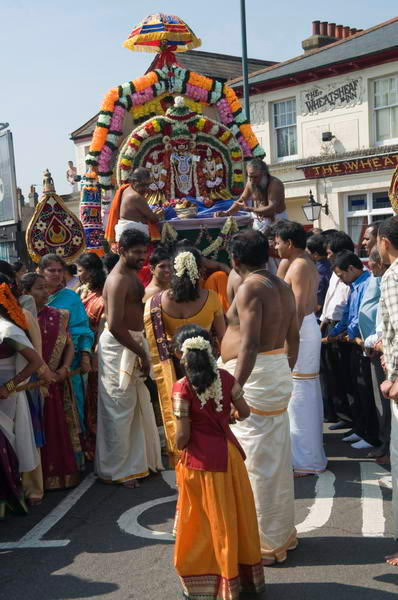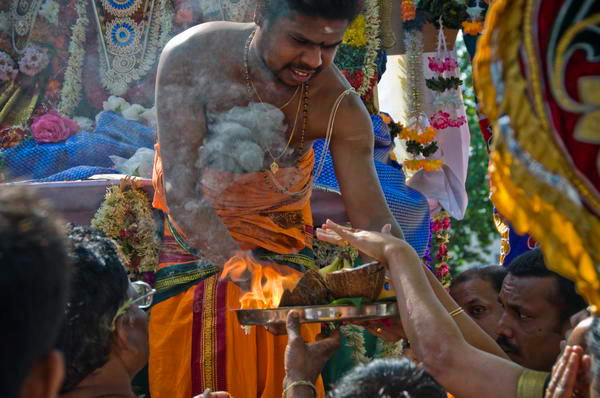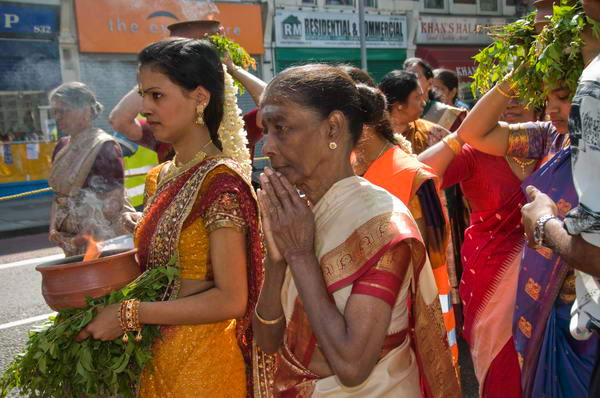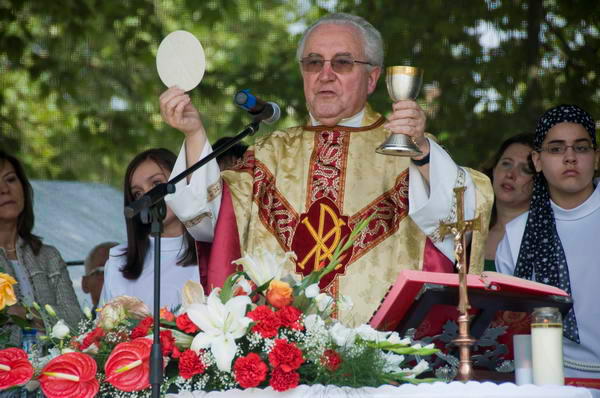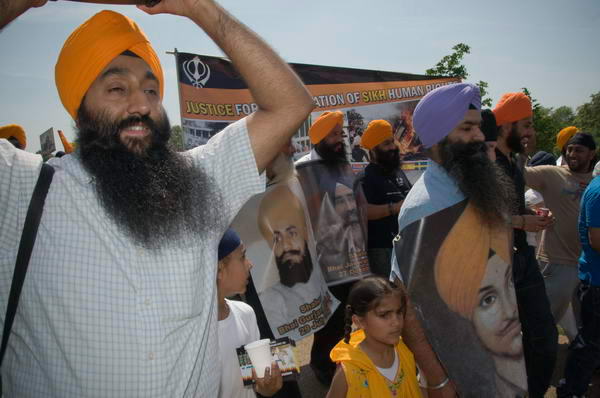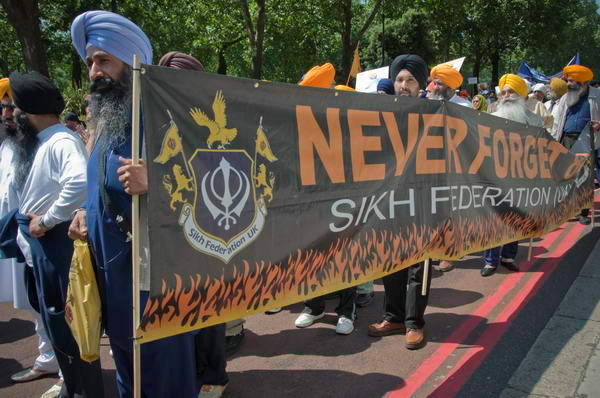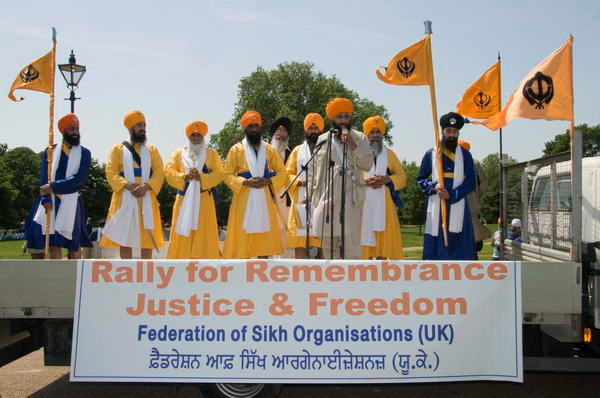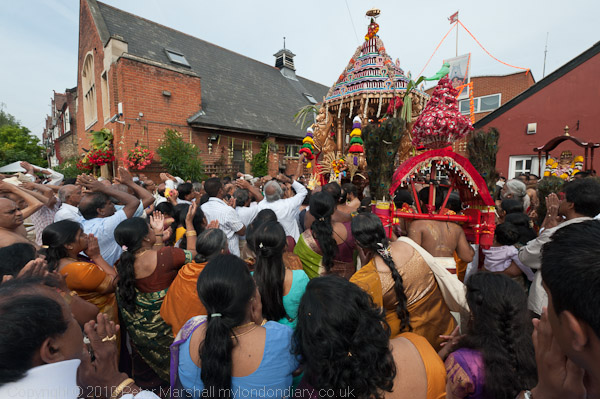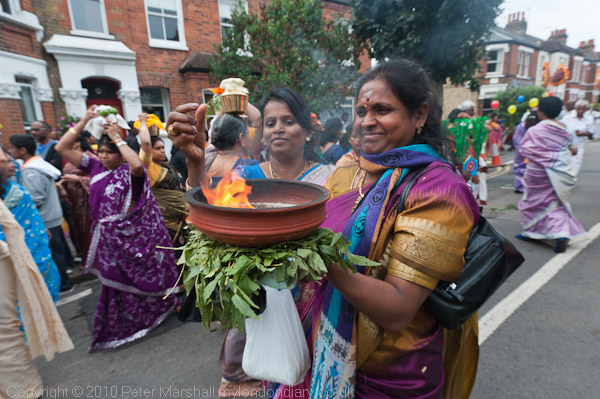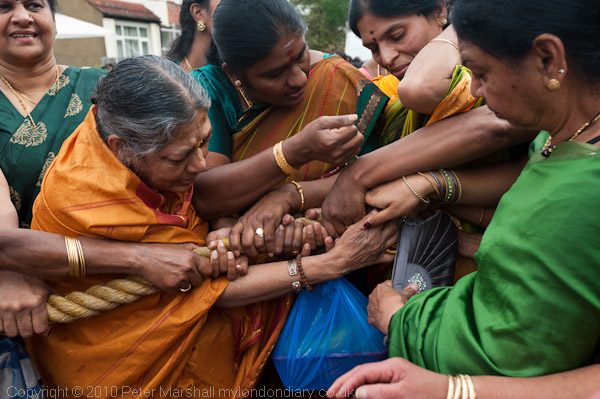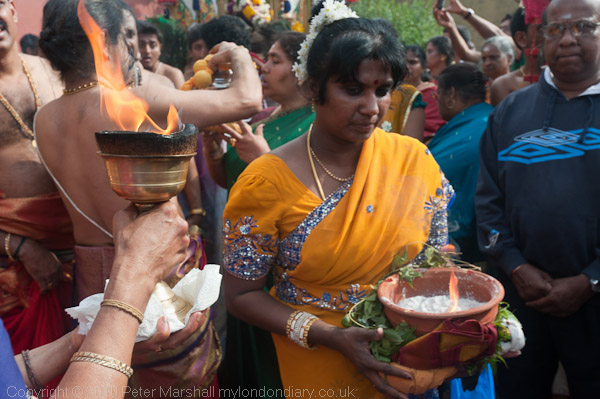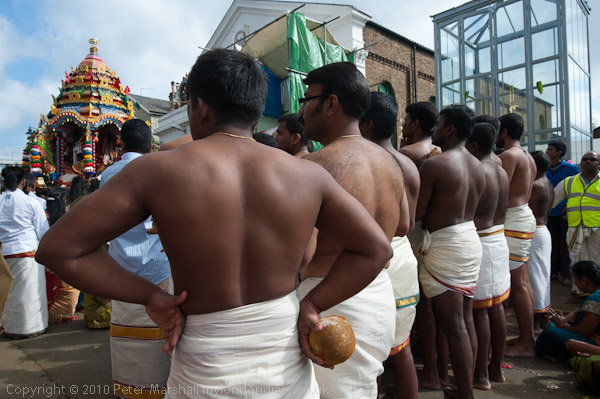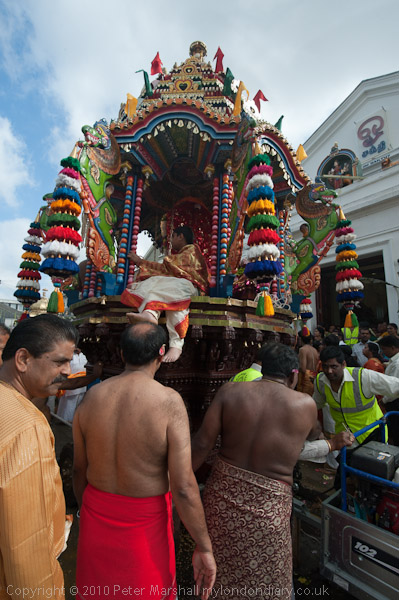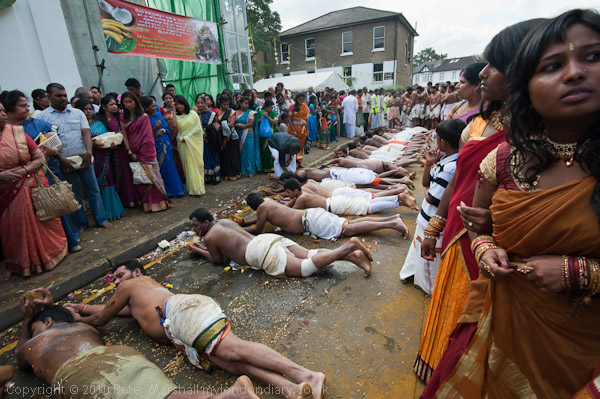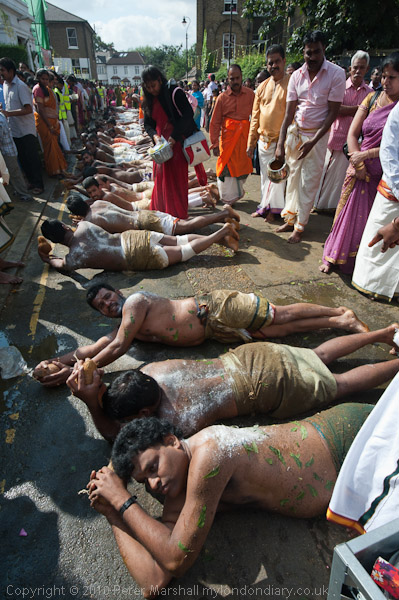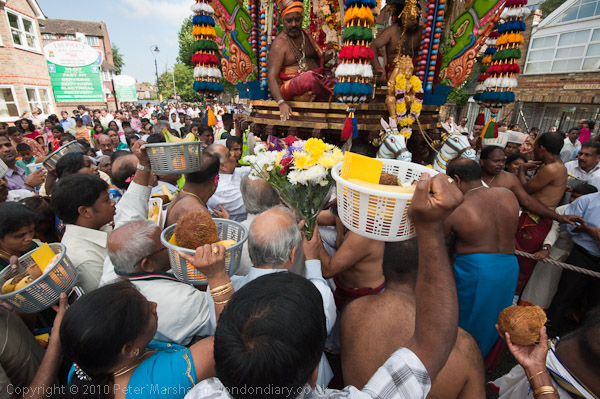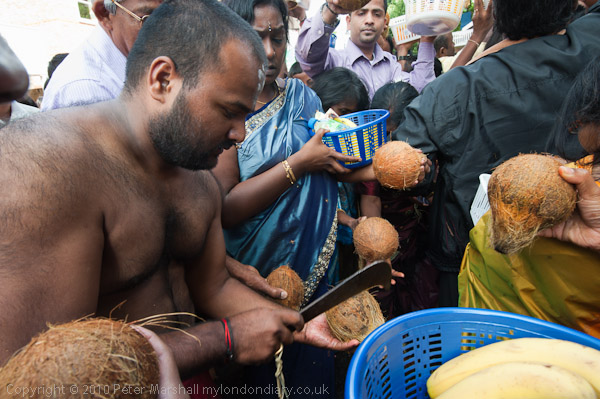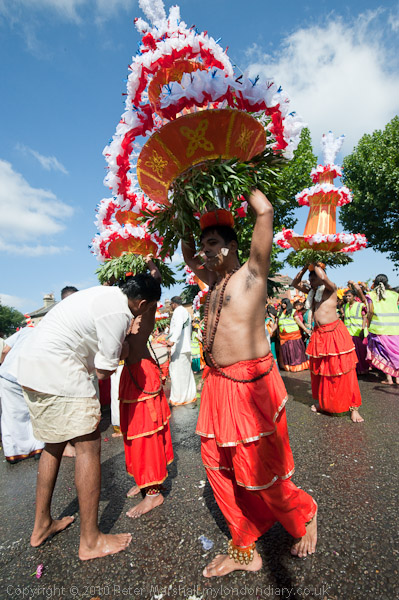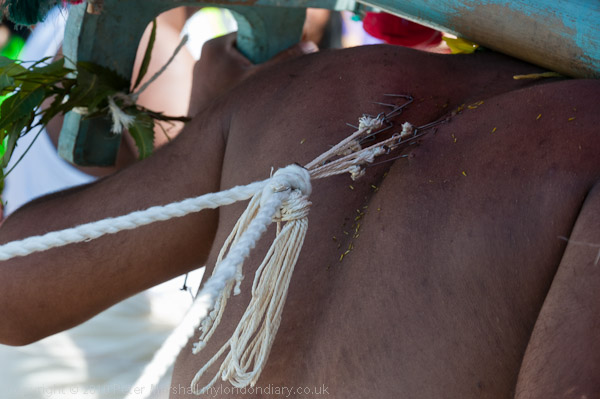London Sri Murugan Chariot Festival: On Sunday 16th August 2009 I travelled to Manor Park in East Ham to photograph this annual festival. A small temple was consecrated here in 1984 but it was rebuilt in 2005 with a 50ft tall marble temple tower in Dravidian style and claimed to be the largest South Indian Hindu temple in Europe. Murugan is the patron deity of the Tamil language and the Hindu god of war. He is generally described as the son of the deities Shiva and Parvati and the brother of Ganesha.
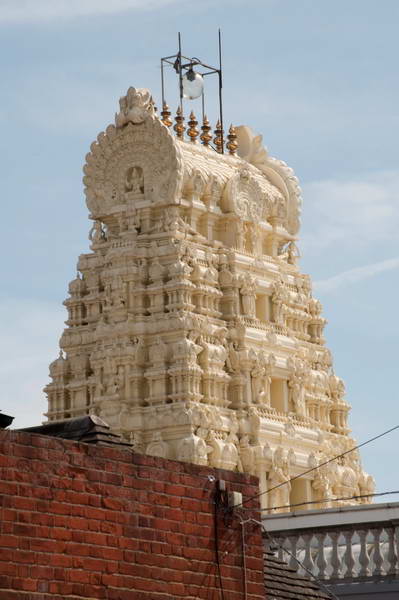
Much of the description below is based on the account I wrote on My London Diary in 2009.
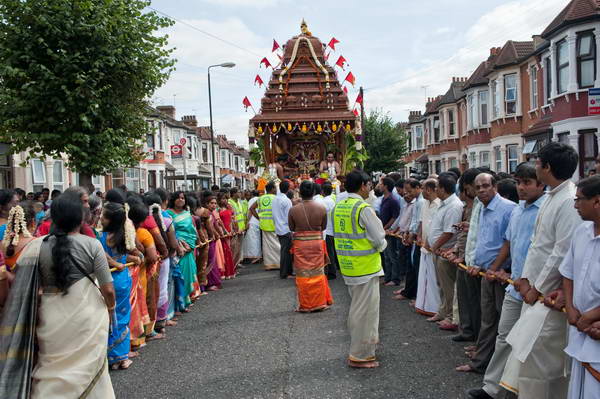
The chariot festival here in which Hindu deities are carried around the streets of East Ham was certainly on a grand scale, with the chariot pulled by people followed by a crowd of perhaps 5000 people, members of London’s Tamil community.
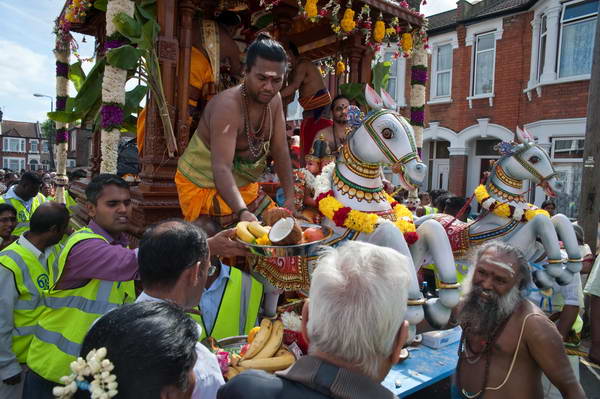
Along the route men and women stood in front of their homes and businesses with plates or baskets of fruit to hand to the temple priests riding on the chariot or walking in front for blessings by the Goddess; metal trays bearing fruits were returned bearing a flame and the families held out their hands to feel the warmth.

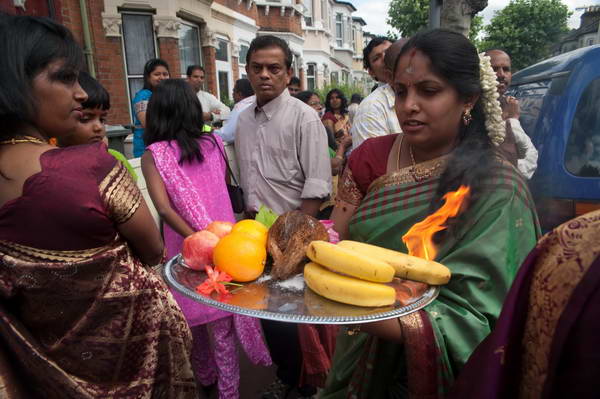
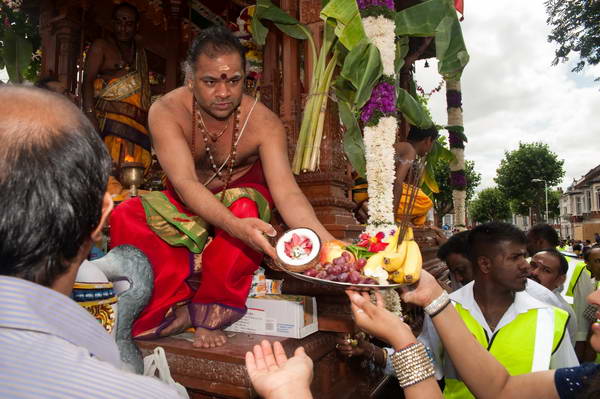
The chariot had two finely painted prancing horses at its front but was pulled by two ropes, on the right by women and on the left by men, with a large mixed crowd of followers behind. Those on the ropes and between them and many others walked barefoot through the streets, but many others kept their shoes on – and so did I, at least for most of the event.
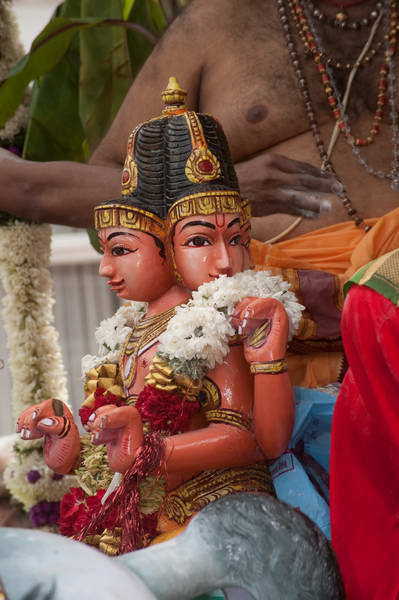
The chariot was too tall to pass unaided under some of the telephone wires on the streets and was accompnied by attendants with a long pole with a beam across its top to lift up the wires while the chariot passed beneath.
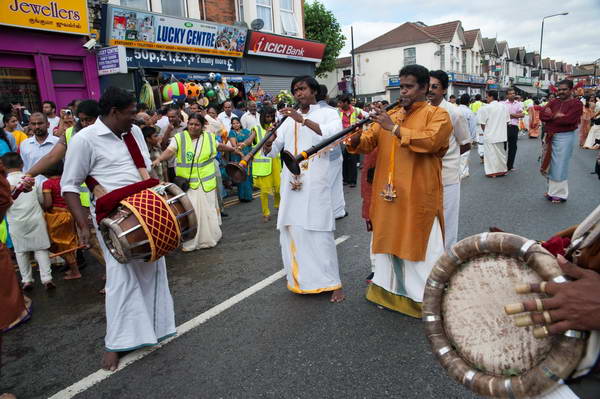
A group of musicians walked in front of the chariot stopping occasionally to play.
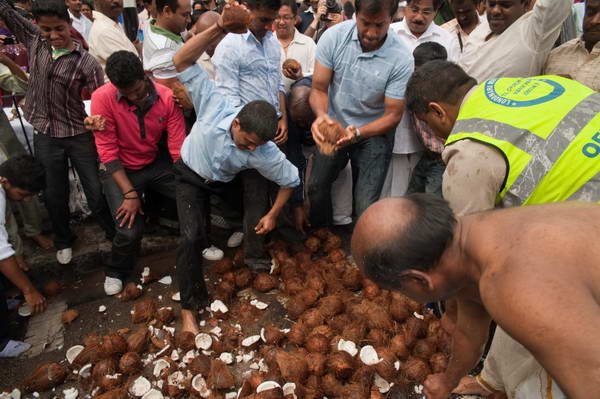
Men walking with the chariot carried short heavy knives which were used to halve the coconuts offered for blessing, and at several places along the route groups of men stood and threw large numbers of coconuts onto the road to smash.
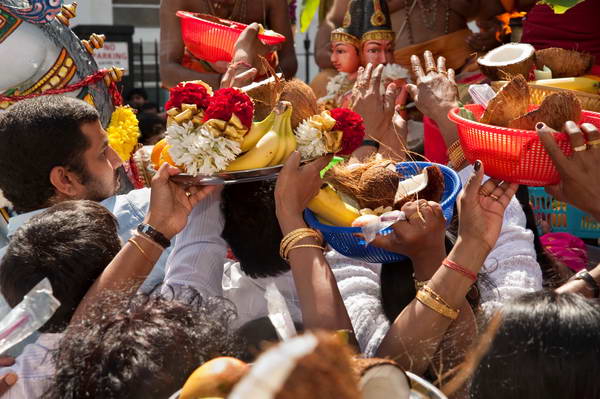
Things began to get a little frenzied as the chariot came back in sight of the temple after around four hours going around the street, with people crowding around anxious to have their plates and bowls of fruit blessed.

Eventually the chariot turned into the large temple yard. I followed it in there and took a few more pictures. There was a very long queue for food and I left for home.
I put many of the pictures I took onto My London Diary and it was very hard to choose which to put in this post. You can see the others at London Sri Murugan Chariot Festival.
Flickr – Facebook – My London Diary – Hull Photos – Lea Valley – Paris
London’s Industrial Heritage – London Photos
All photographs on this page are copyright © Peter Marshall.
Contact me to buy prints or licence to reproduce.

